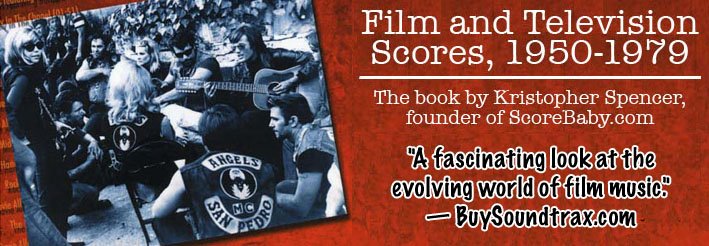 The film of Ray Bradbury’s The Illustrated Man (’69) was considered an interesting failure upon release. Undoubtedly, Jerry Goldsmith’s score is the interesting part. Even Bradbury thought it outshined the film. Because the film is episodic, the score shows some stylistic range. At times it is melancholy and lyrical, and at other times sterile and electronic. It goes from tunefully impressionistic (“Theme”) to chillingly atonal (“Angry Child”). Goldsmith excels at atonality being a self-described serial composer. But his themes aren’t so much austere as they are formal and frequently haunting. The electronic bits are often subtle (like the use of an Echoplex on woodwinds), but on tracks like “21st Century House” the electronics branch out to constitute most of the sound. In fact, his use of electronics anticipates his work on Logan’s Run.
The film of Ray Bradbury’s The Illustrated Man (’69) was considered an interesting failure upon release. Undoubtedly, Jerry Goldsmith’s score is the interesting part. Even Bradbury thought it outshined the film. Because the film is episodic, the score shows some stylistic range. At times it is melancholy and lyrical, and at other times sterile and electronic. It goes from tunefully impressionistic (“Theme”) to chillingly atonal (“Angry Child”). Goldsmith excels at atonality being a self-described serial composer. But his themes aren’t so much austere as they are formal and frequently haunting. The electronic bits are often subtle (like the use of an Echoplex on woodwinds), but on tracks like “21st Century House” the electronics branch out to constitute most of the sound. In fact, his use of electronics anticipates his work on Logan’s Run.– from Chapter 5: Sci-fidelity and the Superhero Spectrum of Kristopher Spencer’s Film and Television Scores, 1950-1979











.jpg)





